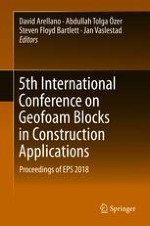2019 | OriginalPaper | Buchkapitel
Improving the Behavior of Buried HDPE Pipe by Using EPS Geofoam
verfasst von : Emre Akınay, Havvanur Kılıç
Erschienen in: 5th International Conference on Geofoam Blocks in Construction Applications
Aktivieren Sie unsere intelligente Suche, um passende Fachinhalte oder Patente zu finden.
Wählen Sie Textabschnitte aus um mit Künstlicher Intelligenz passenden Patente zu finden. powered by
Markieren Sie Textabschnitte, um KI-gestützt weitere passende Inhalte zu finden. powered by
